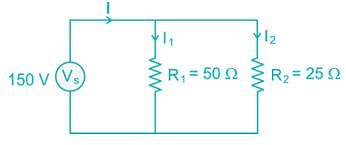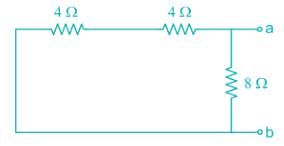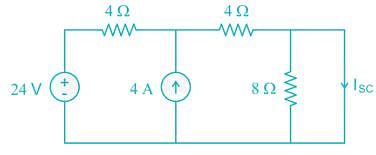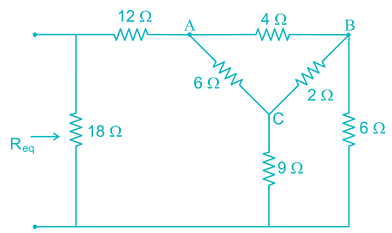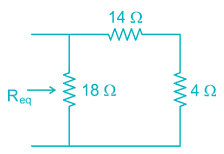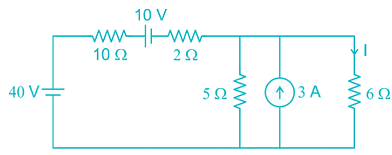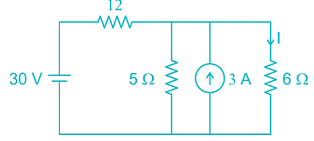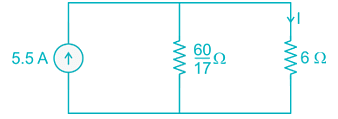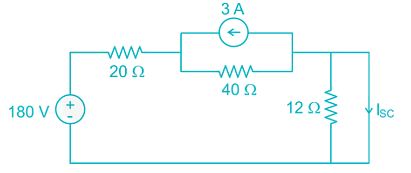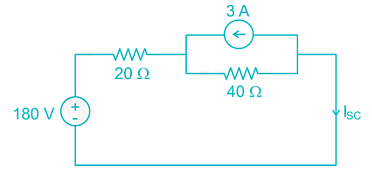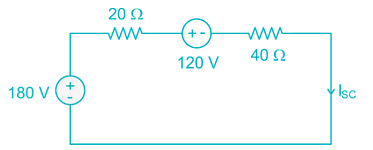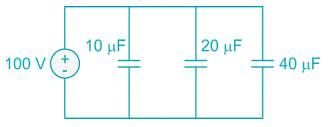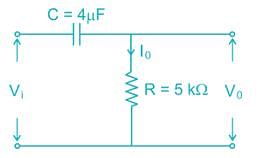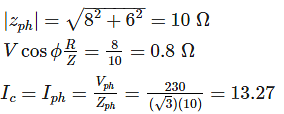Test: Electrical Circuits- 2 - Electrical Engineering (EE) MCQ
20 Questions MCQ Test - Test: Electrical Circuits- 2
If the energy is supplied form a source, whose resistance is 1 Ohm, to a load of 100 Ohms the source will be
A lamp rated at 60V, 40W is to be connected across 230V. What is the value of resistance to be connected in series with lamp?
| 1 Crore+ students have signed up on EduRev. Have you? Download the App |
The sum of currents entering a junction is 9 A. If the current leaves the junction form 3 different paths having the same resistance, the current leaving from any one of the path will be:
A voltage source and two resistors are connected in parallel. Suppose that Vs = 150V, R1 = 50Ω and R2 = 25Ω. Then each resistance contain current?
A current source and a voltage source are connected in series with a resistor as shown below. Suppose that Vs = 10V, is = 3A and R = 5Ω. What is the voltage across the resistor and the power absorbed by the resistor?

The voltage source in the given circuit supplies 24W of power. The current source supplies 6.0 W. Determine the value of the resistance R1 and R2:
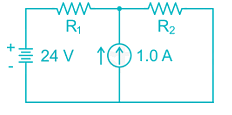
The Thevenin equivalent resistance (RTh) for the circuit shown in fig. is:
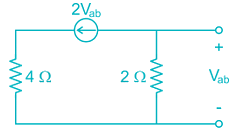
Applying Norton’s Theorem, the Norton’s equivalent circuit to the left of the terminals “a” and “b” in the below circuit is having equivalent current source (IN) and equivalent resistance (RN)
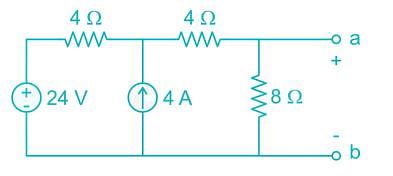
Consider the following circuit and find the current through the 6Ω resistor.
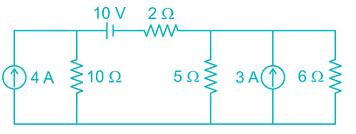
The Norton current at terminals a and b of the circuit shown at Figure:

Given condition justifies which network theorems- the load impedance should be complex conjugate of the internal impedance of the active network.
Three capacitors of 10μF, 20μF and 40μF are connected in parallel across 100 V. The total charge stored in capacitors is:
An ac voltage is described by v(t) = 10 cos (400 πt), find out frequency and RMS value of voltage.
An inductive coil of 0.2 H is connected to 200 V, 50 Hz source. What are the inductive reactance and RMS current in the circuit?
A series resonant circuit has R = 2Ω, L = 1mH and C = 0.1 μF, the value of quality factor Q is:
A ramp voltage V(t) = 100V is applied to an RC differentiating circuit with R = 5kΩ and C = 4μF. The maximum output voltage is
In an a.c. circuit, v = 50sin(ωt+60∘),i = 10cos(ωt)then the power factor of a.c. circuit will be:
A balanced star connected load of 8 + j6 ohms per phase is connected to a 3-phase 230V supply. Power being consumed by the load is.
What will be the bandwidth of a series resonant circuit provided it has an inductive reactance of 1000 Ohm, a capacitive reactance of 1000 Ohm a resistance of 0.1 Ohm? It also know that the resonant frequency is 10MHz.






